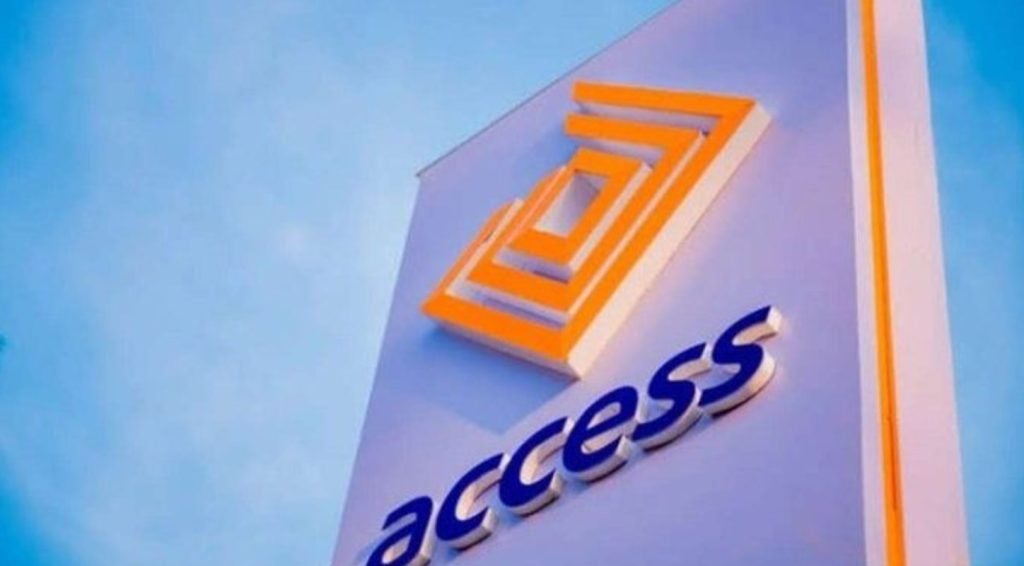impressive earnings figures for 2008, topped by Industrial and
Commercial Bank of China. While 2009 could be an altogether tougher
trading year, the banks themselves believe that opportunities
remain, particularly in terms of mass affluent clients and cards
income, reports Douglas
Blakey.
 Most of the major Chinese
Most of the major Chinese
banks reported an outstanding set of results for 2008. Industrial
and Commercial Bank of China (ICBC) remains the world’s largest
banking group by deposits, market capitalisation and earnings, with
pre-tax profit for the year up 26 percent to CNY145.3 billion
($21.26 billion).
Behind ICBC, the world’s second- and
third-largest banks by market cap, China Construction Bank (CCB)
and Bank of China, reported pre-tax profits of CNY119.7 billion and
CNY87.2 billion respectively, confirming the sector’s status as the
world’s most profitable banking market in 2008.
With retail profits soaring by 43 percent to
CNY63.7 billion and deposits up 9 percent to CNY8.9 trillion, ICBC
attracted the most positive headlines but was not alone.
Initial results from China Merchants Bank, the
country’s fifth-largest bank by market cap – it does not report
fully until 25 April – showed a 38.3 percent rise in net profit to
CNY21.1 billion, with new lending up sharply thanks to the
government’s $585 billion economic stimulus programme to bolster
infrastructure lending.
The annual results were further boosted by
four of China’s major banks reporting a fall in non-performing loan
(NPL) ratios. Bank of Communications (BoCom), in which HSBC has a
18.6 percent share, led the way on NPLs with a drop of 13 basis
points to 1.92 percent.
How well do you really know your competitors?
Access the most comprehensive Company Profiles on the market, powered by GlobalData. Save hours of research. Gain competitive edge.

Thank you!
Your download email will arrive shortly
Not ready to buy yet? Download a free sample
We are confident about the unique quality of our Company Profiles. However, we want you to make the most beneficial decision for your business, so we offer a free sample that you can download by submitting the below form
By GlobalDataWhile ICBC lamented an increase in bad debts
of CNY983 million to CNY9.5 billion, its NPL ratio for personal
loans rose to a relatively modest 1.16 percent – low compared to
banks in the US and Europe. CCB, 16.6 percent owned by Bank of
America, said its NPL ratio for personal loans was 1.08 percent,
down marginally from 1.09 percent in 2007.
Most of the major Chinese banks also achieved
the notable distinction of reducing their cost-income ratios in
2008 (see table). ICBC again led the way with a fall of
518 basis points to 29.84 percent – despite having around 11,000
branches in China.
A large jump in retail deposits was witnessed
across the sector. CCB led the field, reporting record growth of
personal deposits of 28.1 percent to reach CNY2.97 trillion by year
end.
According to the bank, it benefited in
particular from a “vigorous” marketing campaign which boosted
cross-selling among its mass-affluent client base; the number of
mass affluent clients with assets over CNY3 million increased by 93
percent compared with 2007.
Indeed, CCB’s retail deposits were further
boosted by the 2008 launch of its private banking service targeting
customers with assets over CNY10 million, a move mirrored by BoCom,
which introduced its private banking service on a pilot basis
during the year. This helped grow wealth management fee income by
245 percent to CNY998 million.
ICBC also got in on the act, rolling out a
private banking operation during 2008, opening 100 wealth
management centres and 3,000 VIP centres while a large number of
its retail branches were also renovated to attract the
mass-affluent sector.
Looking ahead to 2009
The big question now is how the
country’s banks will navigate the far choppier waters of 2009 and
2010.
Historically, Chinese banking revenue has been
generated from net interest income earned on the margin between
state controlled deposit and lending rates, but that may be set to
change, thanks to an agreement reached by the China Banking
Regulatory Commission and the China Insurance Regulatory Commission
announced in mid-April to allow the banks to set up insurance units
in a pilot programme to encourage financial innovation and
expansion.
Buoyed by its strong results, ICBC said it
will also continue to look at possible international acquisitions
during the year ahead to add to its 20 percent stake in Standard
Bank of South Africa, with a likely focus on Asia and the emerging
markets.
BoCom has also been linked with an overseas
acquisition and while it expects profits growth to slow in 2009,
has forecast loan growth to remain at around 23 percent.
“Profit growth will slow down but there will
still be a rise in profits,” chairman Hu Huaibang told
Reuters.
Zhang Jianguo, president of CCB, said in a
statement: “In 2009, there will still be a lot of international and
domestic uncertainties, and CCB will be facing daunting challenges.
But we will redouble our efforts to provide financial support and
services for economic and social development.
“We will strengthen our internal risk
controls, raise our service levels, and… endeavour to achieve the
quick and effective development in all lines of business.”
An untapped market
Although China’s banks are expected
to face growing margin pressure in 2009 as a fall in exports,
rising unemployment, lower GDP growth and lower interest rates dent
the country’s energetic economy, the banks themselves argue that
much of the country’s banking market remains relatively
undertapped.
Across the sector, lending rose sharply in
2008 as the government instructed banks to help finance
infrastructure to mitigate the effects of a collapse in exports.
Retail lending soared, up by 20 percent, 18.9 percent and 9.7
percent at ICBC, BoCom and Bank of China respectively.
At ICBC, the bank accelerated its credit
expansion rapidly in the fourth quarter with new loans distributed
via its branches increasing by 14.3 percent to CNY536.7 billion,
the largest loan book in the country.
The group’s loan growth was not, however,
restricted to the corporate sector, with small and medium
enterprise and personal loans growing by CNY200.8 billion and
CNY77.3 billion respectively, the sum of which accounted for 51.8
percent of total new loans.
CCB’s personal loan portfolio was also up, by
13.5 percent to CNY821.5 billion, equivalent to 21.6 percent of its
total loan book.
| Country snapshot | ||||||
| China – selected commercial banking groups, ranked by retail loans |
||||||
| Total pre-tax profit (CNYbn) | Retail banking profit (CNYbn)(1) |
Total assets (CNYbn) | ||||
| FY08 | Y-o-y % change | FY08 | Y-o-y % change | FY08 | Y-o-y % change | |
| China Construction Bank | 119.7 | 18.8 | 20.2 | -22.6 | 7,555 | 14.5 |
| Bank of China | 87.2 | -3.9 | n/d | n/d | 6,952 | 16 |
| ICBC | 145.3 | 26 | 63.7 | 42.8 | 9,757 | 12.4 |
| Bank of Communications | 35.7 | 14.8 | 6.02 | 7.1 | 2,682 | 27.1 |
| n/d=not disclosed. (1) retail refers to units either wholly or mainly focused on consumer banking Source: RBI |
||||||
| Country snapshot | ||||
| China – selected commercial banking groups, ranked by retail loans |
||||
| Retail deposits (CNYbn)(1) | Retail loans (CNYbn)(1) | |||
| FY08 | Y-o-y % change | FY08 | Y-o-y % change | |
| China Construction Bank | 2,967 | 28.1 | 821.5 | 13.5 |
| Bank of China | 2,723 | 15.6 | 803.4 | 9.7 |
| ICBC | 3,557 | 8.9 | 796.7 | 20 |
| Bank of Communications | 675.5 | 24.7 | 205 | 18.9 |
| n/d=not disclosed. (1) retail refers to units either wholly or mainly focused on consumer banking Source: RBI |
||||
lag their Western counterparts – and by a considerable margin – is
the proportion of overall revenue generated from fees and
commission income.
income earned by CCB and ICBC, respectively, came from fees and
commissions, for instance, last year. In contrast, HSBC, Bank of
America and JPMorgan Chase derived 47.9 percent, 42 percent and 38
percent from fees and commissions in a year of intense margin
pressure.
BoCom embarked on a major drive in 2008 to
diversify its revenue base, increasing its income from cards in
particular and its custodian business by 45.6 percent and 25.8
percent, respectively. But while the bank grew its net fee and
commission income by 24.5 percent compared to 2007, it still
accounted for only 11.4 percent of net operating income at year
end.
According to data from the central bank, the
People’s Bank of China, Chinese banks issued 300.4 million new
cards in 2008 of which 142.3 million were credit cards. The growth
rate for credit card issuance was 57.7 percent higher than in
2007.
Bank card transactions reached CNY127.2
trillion, up 14.1 percent from 2007, while the number of POS
terminals and ATMs increased by 663,900 and 39,900 respectively to
total 1.85 million and 167,500.
CCB’s bank card fees grew by 36.14 percent to
CNY7.1 billion, having ramped up its card marketing strategy,
resulting in 6.1 million new cards being issued, bringing the total
number of credit cards in issue to 18.71 million cards.
At Bank of Communications, card fees and
commissions rose even more sharply, by 46 percent to CNY2.93
billion.
Unsurprisingly, ICBC also boasted a phenomenal
growth in card business, with total cards in issue up by 67 percent
at 39 million, while income from its card business grew by 34
percent to CNY7.2 billion.
Again in marked contrast to the alarming
growth in card delinquency rates in the West, China’s credit card
delinquency rate, measuring card debt more than 60 days late,
remained at 2 percent, according to data from the China Banking
Regulatory Commission.










